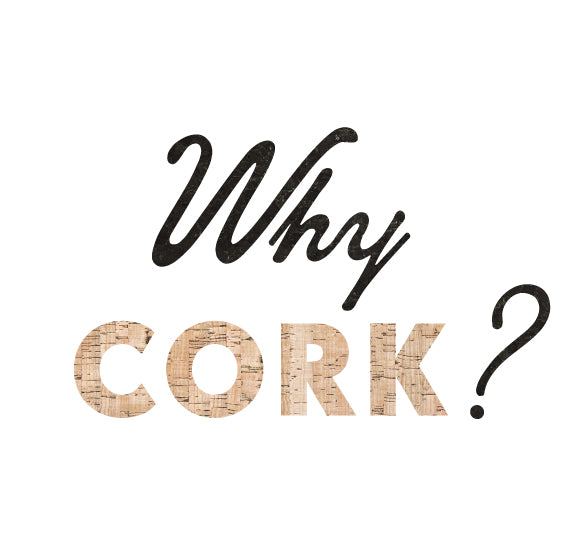What is Cork?

A look inside this flexible and eco-friendly resource
You probably already know cork as that lovely little material you'll find on memo boards or keeping your bottle of wine fresh. But have you ever thought about what it is, where it comes from, or how else we can use it?
Cork is a truly remarkable, eco-friendly, and sustainable material that boasts some pretty unique characteristics. It's lightweight, water-resistant, and elastic - it can even provide insulation from both heat and sound. Because it's so versatile, you'll find cork used in industries from winemaking to home construction to fashion.

The cork oak tree: a gift from nature
Cork is an all-natural product that comes from the bark of the cork oak tree (aka Quercus suber). These magnificent trees are native to southwest Europe and northwest Africa, though Portugal is home to the most cork oak trees in the world.
In fact, Portugal is responsible for half of the world's overall cork production, which has created thousands of jobs for its inhabitants. Not only do cork oaks provide us with this fantastic material, but they also play a crucial role in supporting biodiversity and combating climate change.
From tree to treasure
One of the most amazing aspects of cork is the harvesting process, which is incredibly sustainable and environmentally friendly.
The cork-making process begins once a tree has matured after 25 years of growth. Cork oaks are never cut down during harvesting; instead, only the bark is hand-collected every 9-12 years. This process causes absolutely no damage to the tree, and the bark completely regenerates between harvests.
Amazingly, bark harvesting causes cork oaks to absorb more carbon dioxide than they would if left untouched, making cork production an essential ally in the fight against climate change. A single cork tree can live for 200-300 years and be harvested an average of 15 times in its lifespan.
Each cork harvest produces a distinct product with unique uses. The first and second bark harvest yields are coarse and irregular, but they're still used in insulation, flooring, and decorative objects. The third and subsequent bark harvests result in "amadia" cork. This more mature bark is considered the highest quality cork, used in everything from wine production to fashion, home goods, and more.
The many uses of cork
Once it's been removed from the tree, every part of the cork bark is put to use. It's best known for sealing wine bottles, but you'll also find it in some surprising places, like flooring, cricket ball cores, and space shuttles. Cork's insulating properties also make it a popular choice for soundproofing rooms and providing thermal insulation in homes.
And, of course, cork is making its way into the world of sustainable fashion and home goods. It's often used to make bags, wallets, shoes - even clothing! In homes, cork isn't just for bulletin boards and coasters. We're starting to see more decor and furniture being crafted from this sustainable material.

Cork is truly a gift from Mother Nature
Not only is it an eco-friendly, sustainable, and versatile material, but it also plays a vital role in reversing the effects of climate change. With an array of uses, from wine stoppers to fashion accessories, cork is a material that's definitely worth celebrating. So, the next time you uncork a bottle of wine, take a moment to raise a toast in appreciation of this wonderful natural resource!
At KORK, we make stylish, sustainable goods for your home and closet. Head to our shop to see our cork and cork-inspired accessories, gifts, and decor!







